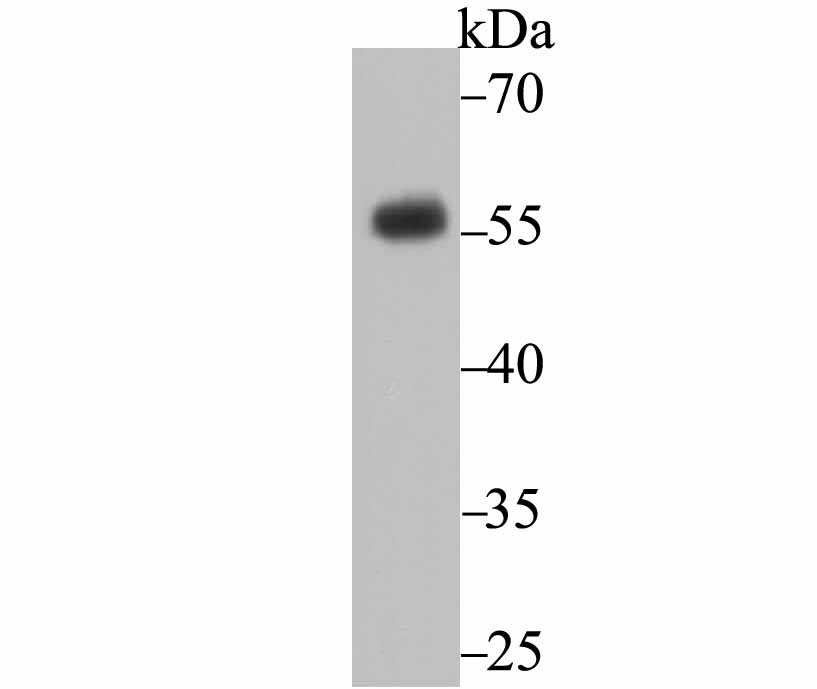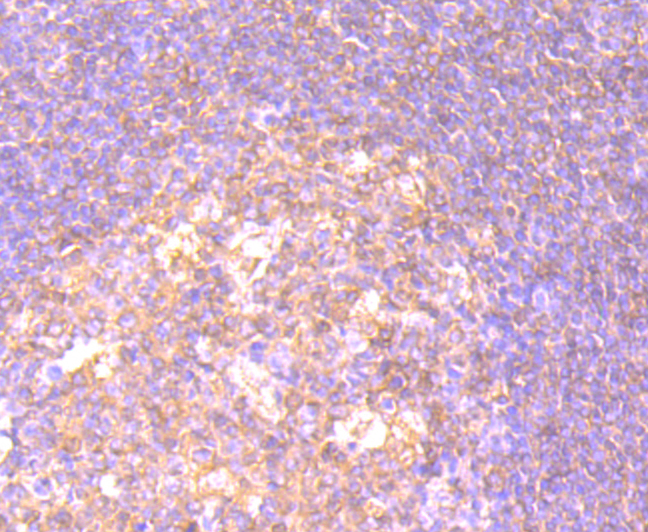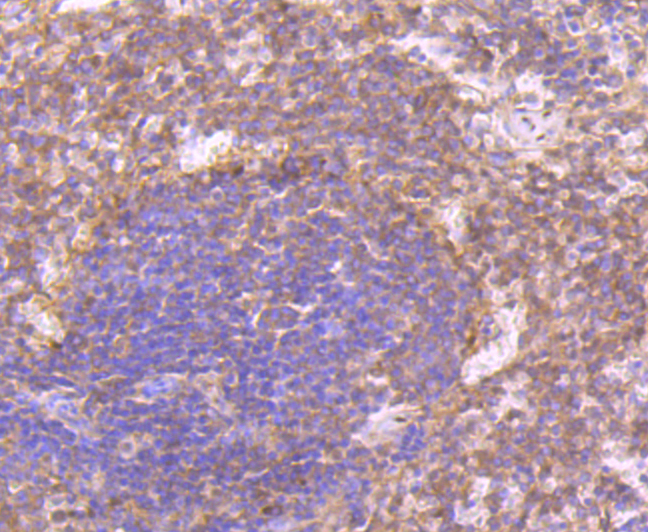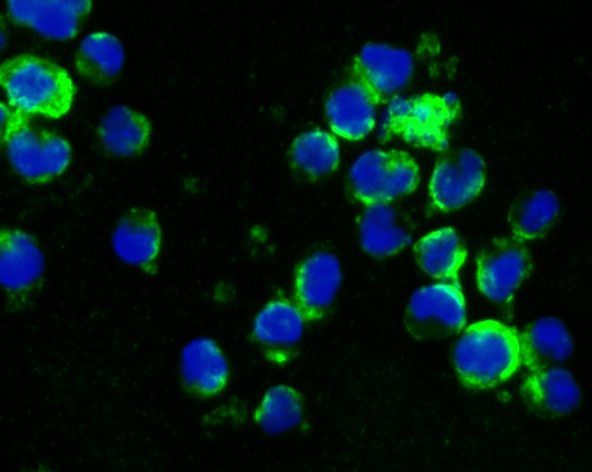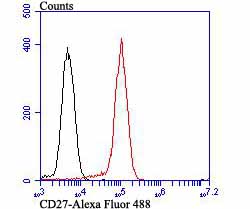The tumor necrosis factor (TNF) receptor family is composed of several type I integral membrane glycoproteins that exhibit homology in their cysteine-rich extracellular domains. Members of this family include FAS, OX40, CD27 and CD30. Ligands for these receptors are often type II transmembrane glycoproteins, as is the case for CD27 and CD30. CD27 is a homodimeric lymphocyte-specific surface antigen present on T and B lymphocytes. Activation of the CD3 complex via the T cell receptor for antigen leads to an increase in CD27 expression. Together, CD27 and its ligand, CD27L, generate co-stimulatory signals required for complete T cell activation. CD30 is a surface marker for neoplastic cells of the Hodgkin's lymphoma and related hematologic malignancies. CD30L has been shown to enhance the proliferation of the Hodgkin's cell line HDLM-2, but exerts antiproliferative effects on large cell anaplastic lymphoma cell lines.

